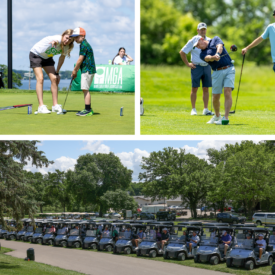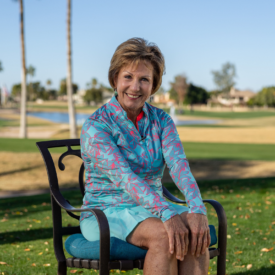
Golf Day Minnesota: Leveraging Media and Influencer Power to Grow the Game
Golf Day Minnesota brings a fresh approach to promoting the game of golf, complementing the traditional advocacy-focused state golf days.
With Minnesota boasting one of the highest golf participation rates in the United States, the Minnesota Golf Association (MGA) leveraged this enthusiasm to create an event that encourages golfers to actively participate and celebrate the sport. Encouraging members to participate in something that feels natural to them is a great way for brands to connect with their members in a positive way.
Jon Mays, the Executive Director of MGA, shared the origins and vision behind Golf Day Minnesota.
“We have a really avid golfing community, and we only have a handful of months throughout the year where we can actually play, because of our weather up here. So once the weather turns and our golfers have a chance to get out, they do so in waves,” Mays said.
This enthusiasm inspired MGA to launch Golf Day Minnesota as a way to kick off the season and celebrate the sport across the state. Mays explained that the event was strategically designed as a marketing initiative to maximize exposure for golf and the MGA.
“We used it kind of as a marketing ploy, in order for us to tap into social media, tap into some other alternative forms of media, and generate as much coverage for golf in general and for our association as we could,” he noted.
Local golf influencers and other athletes promoted the event on social media, while traditional media outlets, including TV and radio stations, also played a significant role in spreading the word.
The promotion of Golf Day Minnesota relied heavily on influencer marketing, a modern strategy that has proven effective in reaching a wider audience.
“Most of the promotion happened through the influencer project. The MGA team identified some key people through social media that we knew had a large following and tapped into them to tell our story,” Mays explained.
These influencers shared authentic, organic content about their love for golf, creating a genuine connection with their followers. The MGA posted these videos weekly in the lead-up to the event, ultimately engaging a broader audience and generating interest beyond their typical membership target.
The response from golfers across Minnesota was overwhelmingly positive. Mays emphasized the success of the initiative, which encouraged people to get out and play, with Youth on Course donating $5 for each round posted. “We had over 11,000 participants, which is a testament to the vibrant golfing community here,” Mays noted. Despite rainy weather in parts of the state, Minnesotan golfers displayed remarkable resilience and passion, ensuring the event’s success.
The partnership with Youth on Course further amplified the event’s impact. Minnesota boasts the second-largest Youth on Course program in the country, with over 20,000 members. “Youth on Course has been an amazing partner for us. For us to have those types of numbers, it’s really gotten into the community and is a huge talking point among golfers and just people in general,” Mays said. This partnership provided a compelling anchor for Golf Day Minnesota, promoting both membership and donations to the program.
Looking ahead, Mays envisions an even more expansive and impactful event in the coming years. “Bigger and better. We have sort of a blueprint for what we think we can do. The more we can get people talking about golf and all the great things it can do, that’s the baseline,” he stated. Their goal for next year is to involve more courses across the state, particularly in northern Minnesota, and to continue growing the event’s reach and engagement.
For other associations considering a similar event, Mays advises clarity in defining goals and missions. “You have to identify what your core mission is for the day, what you want the outcome to be, and then attack that. Having your course members throughout the state buying into it and being a part of it is crucial,” he emphasized. Mays also highlighted that building strong media connections and utilizing every angle of media marketing, from traditional outlets to social media influencers, is essential for success.
Golf Day Minnesota’s inaugural event, conceived in early 2024 and brought to life with the support of local courses and the Youth on Course National organization, set a strong foundation for future growth. As Mays reflected, “We started planning early in the calendar year and now we have a head start. We’re already thinking about next year and how we can improve it and continue to grow it.”
With a clear mission, strategic marketing, and community engagement, Golf Day Minnesota exemplifies a unique and effective approach to promoting the game of golf, fostering enthusiasm, and making a lasting impact on the golfing community.
By: Santana Shipley
 CSF Awards Dinner Celebrates Clubs and Contributors
CSF Awards Dinner Celebrates Clubs and Contributors


 Mary Pomroy
Mary Pomroy Kevin Heaney
Kevin Heaney
 Teen Golfer Austin Perkins Makes History at Connecticut Amateur
Teen Golfer Austin Perkins Makes History at Connecticut Amateur
